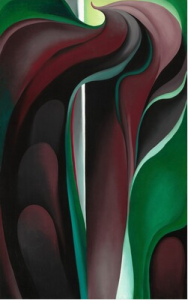
IMAGINE A PAINTING made up of only one large brushstroke. Rather boring? Sort of meaningless? Okay, then how about two strokes? Maybe three? Still not doing it for you? Okay, how many brushstrokes does a painted image need to convey an understandable, reliable meaning?
I think everyone would agree that the more strokes, the more detail, the more intricacies of shape and shades of color the viewer can experience, the more interesting, subtle, and rich the painting becomes.
To carry the analogy further, in any painting, each brushstroke has only a certain color and only goes so far. Each stroke is deliberately intended and limited by the artist (Jackson Pollock notwithstanding) to fill a certain space and to convey to the viewer’s eye a certain tone and, presumably, a small part of the entire meaning of the artwork.
So, if any one stroke were to be widened or extended beyond its intended scope or placed in an entirely wrong part of the canvas, the whole painting would be ruined. Wouldn’t you agree?
Why all this talk of paint?
Now, why are we talking about paint strokes? No, this isn’t going to be a Bob Ross learn-to-paint lesson. Rather, I’m using the metaphor of painting to talk about metaphors in the Bible. Let me elaborate.
God has a message, a meaning that he wishes to convey to the world, his creation. This message is especially meant for the crown of his creation, mankind (Psalm 8:5). Simply put, God knows certain things, and he knows that man knows certain things. So, the task he has given himself is to convey—as a teacher would—his meaning to his creatures, based on facts and concepts his creatures already understand.
Believe it or not, he wants his creation to know about him. The writer of Psalm 103 says, “He made known his ways unto Moses, his acts unto the children of Israel.” (Psalm 103:7) To an extent, he has built into man a certain knowledge of God in the fact that he has made man “in his image” (Genesis 1:27).
Admittedly, man does his best to twist God’s meaning, sometimes through simple ignorance (think of the disciples wondering what Jesus meant when he said that he had bread they “knew nothing about“), and sometimes by deliberate self-deception (think of Eve choosing to believe the serpent’s denial of God’s warning, “you shall not surely die“). But neither of these tendencies negates the fact that God has revealed himself.
No fear of the blank canvas
To get back to the painting analogy, throughout biblical history, God has been slowly daubing on more paint. He always had his completed image in mind, but was slowly, patiently revealing it to his class.
The intent of this blog is to analyze some of these brushstrokes—these biblical metaphors—more closely. We’ll ask why they are that color, why that shape and size, and what part of the picture of God they show us.
So, get your smocks on and let’s get started!